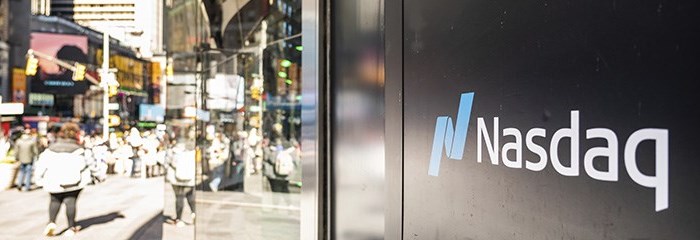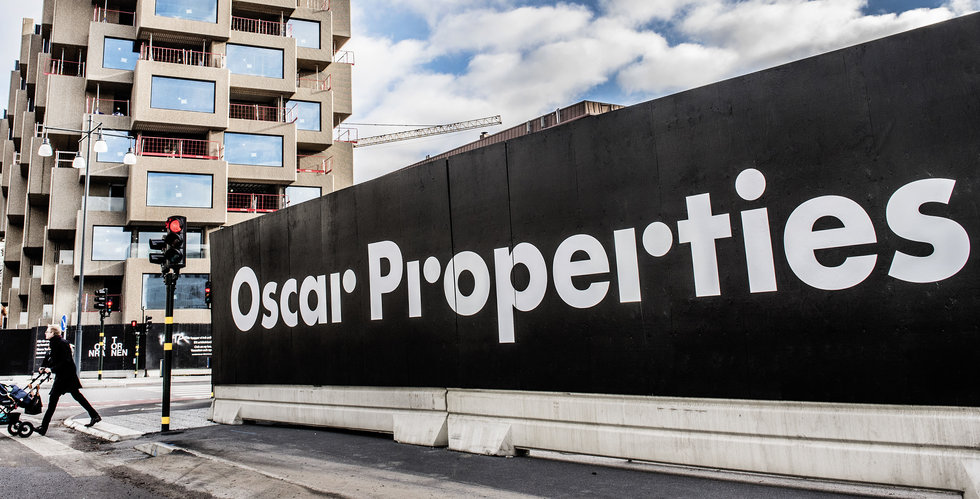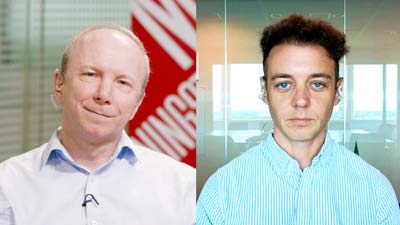
Analyst Note | Oct 26, 2020
Narrow-moat Autoliv, supplier of air bags, seat belts, and steering wheels to the global auto industry, reported earnings per share before special items (EPS) of $1.48, $0.32 better than the CapIQ sell-side consensus EPS estimate of $1.16 and $0.18 ahead of the $1.30 EPS reported last year. Revenue was slightly better than the year-ago period, up 0.5% to $2.04 billion. Excluding slightly positive currency effect, organic revenue was up 0.4%, outperforming a 4.9% decline in global light vehicle production by 5.3 percentage points with all major regions contributing to the outperformance. Owing to management’s improved outlook for the full year as well as the time value of money since our last update, we expect to raise our fair value estimate by $5 to $85. Autoliv shares trade at a 1% premium to our expected fair value.
Management's 2020 guidance, which was withheld before third-quarter results, includes a 14.5% decline in revenue with an adjusted operating margin of around 6.0%. We had already been anticipating margins within management’s guidance range, but revenue guidance is about 4 percentage points better than our model forecast. Medium term, management believes Autoliv can surpass the growth in the total addressable market, or TAM, by 3-4 percentage points, because of the firm's new business backlog. As a result, we do not anticipate changing revenue assumptions in the latter portion of our five-year forecast that results in 6% Stage I average annual revenue growth.
We believe Autoliv’s liquidity is healthy at $2.0 billion including roughly $1.5 billion in cash and $0.5 billion in available credit line. The firm has a $275 million debt maturity in 2021 and another $523 million in 2022. However, provided bond markets stay liquid, we think Autoliv will be able to refinance the upcoming maturities. The firm has historically been conservatively financed and debt/equity at the end of the third quarter was 2.4 times, respectable given the COVID-19 environment.
Business Strategy and Outlook | May 19, 2020
Autoliv is the global market leader and is well positioned for growth in vehicular passive safety content. An ability to innovate and then commercialize technology has helped support profitability and returns. Rising New Car Assessment Program, or NCAP, safety standards will require auto manufacturers to use active safety features to even be considered for a five-star crash-test rating. Autoliv's passive safety products interact with active safety systems in occupant collision protection. As consumers in emerging markets become wealthier, demand for safety content should increase. In addition, as roads become crowded and traffic fatalities increase, developing countries may require similar vehicle safety legislation to that required in Europe and the U.S.
Autoliv has demonstrated technological leadership. The company and its predecessors introduced two-point seat belts, the retractable seat belt, seat belt pretensioners, side-impact air bags, and various pedestrian collision safety technologies. It annually spends about 5% of sales on research and development and holds 6,000 patents, mainly in airbags and seatbelts. Additionally, Autoliv has produced an average of 4 percentage points of returns in excess of its cost of capital since 2002.
Slightly more than 80% of Autoliv's work force is located in low-cost countries, compared with about 30% at the end of 2002. We view this as a strategic positive for Autoliv as the firm pursues business in developing markets, leading to a leaner cost structure and enabling the firm to spend larger amounts on research and development without compromising margins. It also positions the company to take advantage of its customers' objective to use more global, common vehicle architectures.
Economic Moat | May 19, 2020
The sources of Autoliv's narrow economic moat rating include its intangible assets and high customer switching costs, and to a lesser degree, its cost advantage. Some safety product areas are also oligopolistic, resulting in a slight efficient scale moat source benefit. The company's moat also benefits from a substantial global manufacturing presence, highly integrated and long-term customer ties that result in sticky market shares, and moderately improved pricing power from a well-diversified customer base.
Autoliv's consistent technology innovation enables favorable pricing relative to many automotive industry suppliers, increasing the company's dollar content per vehicle. New innovations typically debut on European and North American luxury vehicles, where average safety content is in excess of $500 per vehicle. In general, automakers are willing to pay for components and systems that provide substantial product differentiation, weight reduction, enhanced safety, or reduced cost, as is the case with Autoliv. Having a diversified global customer base provides Autoliv the opportunity to maximize pricing of its innovative product technologies by selling to a broader group of clients.
Autoliv's customers would incur prohibitively high switching costs should they decide to withdraw business in the middle of a vehicle program, especially when Autoliv has a supply agreement for a complete set of passive safety systems. Costs for switching to another supplier would include the substantial lead time and investment to develop and validate new components, the potential for production disruptions, and the cost of moving equipment and tooling. The whole process of changing a critical supplier like Autoliv might cost an OEM as little as a few million dollars to as much as several hundred million dollars, depending on the size and scope of the components or systems being replaced.
Automotive original equipment manufacturers, or OEMs, prefer vendors like Autoliv that can supply components and systems on a global basis. To reduce costs, some of the underlying safety components of a particular vehicle sold in the United States may be the same as another vehicle that might be sold in Europe, South America, or Asia. As emerging-market countries develop, a greater number of these safety components may become common to more than one region. Also, some countries have local content laws that require a certain percentage of components to be sourced from within that country. Winning a contract to supply a major component or system for a global vehicle program requires a supplier with a substantial global manufacturing presence.
With more than 80% of Autoliv's global work force now located in low-cost countries, the company has a lower fixed-cost base than other automotive suppliers without a moat. Developing a global footprint like Autoliv's--with production facilities in 27 countries--would require a huge capital investment, a substantial barrier to entry for potential competitors, particularly given the challenges for auto suppliers' to consistently turn an economic profit.
Close ties with OEM customers are integral to success in the automotive industry supply base and create another significant barrier to entry. New-vehicle lead times can run as long as 36 months. Autoliv's engineers participate very early in the development process, especially when an all-new vehicle platform is being developed, because safety is not only important to consumers but also mandated by governments.
Once launched, most vehicle programs have a five- to 10-year life cycle, assuring Autoliv long-term contractual streams of revenue, albeit subject to volume changes dependent on consumer demand for specific models, and overall economic conditions. When a vehicle nameplate has a complete redesign, including active and passive safety systems, and Autoliv is the supplier for the predecessor program, the company typically becomes the incumbent supplier for the redesigned successor vehicle program. In total, Autoliv potentially has a six- to 13-year tie-up (development and production) with each customer's vehicle program. We view Autoliv's diverse, well-established, long-term, highly integrated customer relations, supplying hundreds of vehicle programs, as an invaluable barrier to entry.
Fair Value and Profit Drivers | Oct 26, 2020
We recently raised our fair value estimate on the shares of Sweden-traded Autoliv ADRs to SEK 750 from SEK 740 partly due to the time value of money since our last update but also because of better than we had previously anticipated second-half 2020 recovery from a COVID-19-impacted first half, partially offset by the change in the currency spot rate since our last update to SEK 8.7715/$1 from SEK 9.2158/$1. We use a 9.6% weighted average aftertax cost of capital to discount Autoliv's future cash flows. Autoliv's revenue cyclicality and operating leverage result in our above average systematic risk rating. Consequently, our cost of equity assumption is 11%. Given the company’s conservative balance sheet, we assume a 78% equity capital weighting with a 6.5% cost of debt. We also assume a 28% long-run effective tax rate.
Autoliv demonstrates the ability to innovate, providing a slight buffer to revenue cyclicality as well as operating leverage, something that we would expect from an auto-parts supplier with an economic moat. Excluding currency translation, Autoliv guides to revenue growth exceeding the year-over-year percent change in global light-vehicle production by 3-4 percentage points based on penetration of innovative safety products. Including currency translation, we model an average 6% revenue growth in our five-year forecast, including a 2020 revenue drop of 15% for COVID-1 (up from a drop of 19% in our previous model), a 12% rebound in 2021, followed by a return to more normalized global light vehicle production in 2023.
Management guides to 13% adjusted EBIT margin (before special items) in the long term. We model adjusted EBIT margins that contract from 9.1% in 2019 to 6.0% in 2020 due to the negative operating leverage from COVID-19 factory closures, but then expand to a normalized sustainable midcycle of 10.8% in the final year of our forecast, 160 basis points above the 15-year historical 9.2% median. Margins had been steadily contracting because of rising spending for Veoneer's advanced driver assist and autonomous driving technologies as well as investment needed to support customers that were impacted by the worldwide recall of defective Takata airbag inflators. Now that Veoneer was spun-off in June 2018 and the company has caught up with the influx of airbag inflator demand, once the COVID-19 crisis is past, we believe Autoliv will make progress toward its 13% adjusted EBIT margin long-term objective.
Risk and Uncertainty | May 19, 2020
Commodity costs and declines in global vehicle production, such as the current harsh macroeconomic environment induced by the coronavirus, present the biggest risk to Autoliv. Economic profitability may be at risk if oil, steel, and copper prices return to highs experienced during periods of relatively high global economic expansion.
Annual contractual price reductions for OEM customers are an auto industry norm, so Autoliv has to aggressively employ kaizen, kanban, and Six Sigma Lean manufacturing programs to advance cost savings. To maintain pricing and margin, Autoliv also requires continual investment in innovation. A loss of focus in cost reduction or technological development could result in an erosion of profitability and return on invested capital.
Additionally, the company operates in a capital-intensive industry subject to cyclical demand. As a result, Autoliv has a high degree of operating leverage, so sudden declines in volume can have a meaningful impact on profit, which we expect in 2020 from COVID-19. Conversely, any increase in sales following large cost-cutting measures significantly raises profits. The potential changes to profitability brought on by the firm's operating leverage and cyclical demand results in our high fair value uncertainty rating.
Stewardship | May 19, 2020
Our Standard stewardship rating reflects Autoliv's solid cash generation, financial reporting transparency, and returns to shareholders. Over the past 10 years, Autoliv has returned approximately $2.9 billion to shareholders mostly through common stock dividends but also some share repurchases. Due to the COVID-19 pandemic, the company suspended its dividend after the first quarter of 2020. Upon the spin-off of Veoneer in July 2018, Mikael Bratt became the president and CEO of Autoliv, replacing Jan Carlson who held the position since 2007 and who became president and CEO of Veoneer.
Before assuming his current position, Bratt was president of Autoliv's passive safety group since May 2016. Before joining Autoliv, Bratt had been with the Volvo Group for 30 years, most recently serving as the executive vice president in charge of Group Truck Operations and previously as the Volvo Group CFO. We expect Bratt to continue Autoliv's track record in creating shareholder value.
We like that management creates shareholder value by returning profits to shareholders through dividends and share repurchases, which we expect to resume post-COVID-19 crisis. After the 2009 Great Recession, the company resumed its dividend effective for the third quarter of 2010 and increased it 17% for the fourth quarter of that year. Since 2012, the dividend payout ratio has been above a very healthy 35% of net income.
A share-repurchase program is still in effect. The company reactivated its share-repurchase program in the fourth quarter of 2013. Since then, Autoliv has repurchased over $1.0 billion worth of its stock and, at the end of 2019, had 3 million shares remaining under its current authorization. Autoliv also deserves credit for its financial transparency. The company provides more detailed information than many of the parts companies we cover.






















